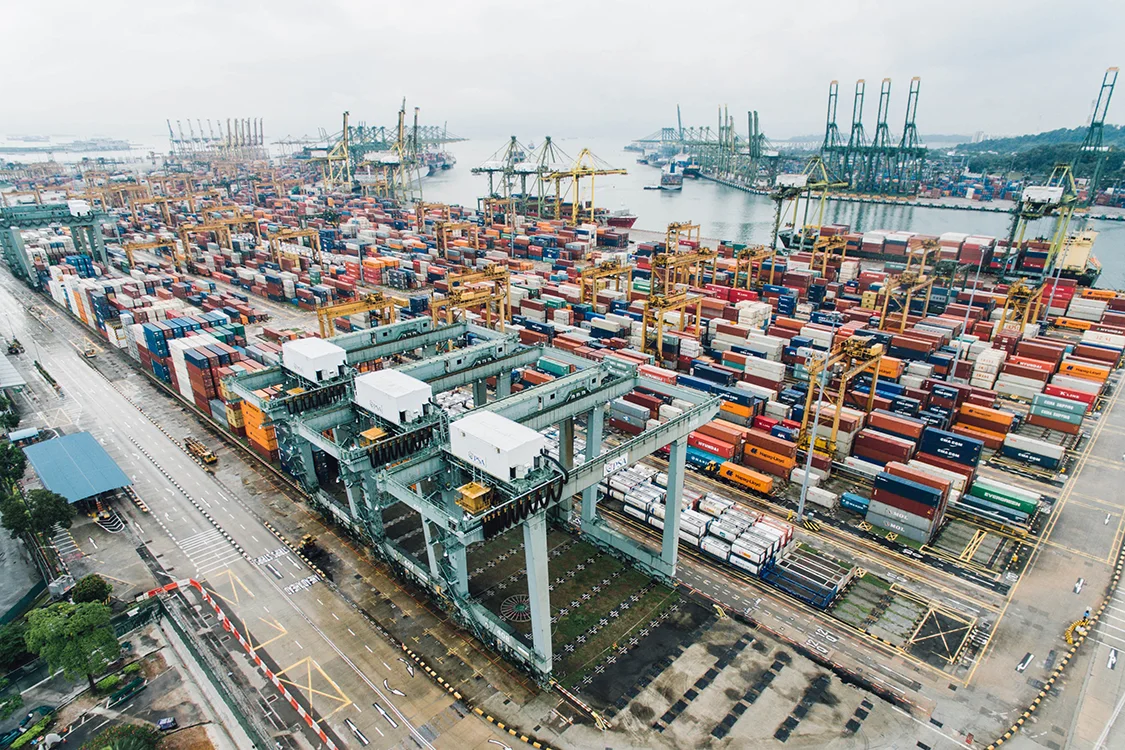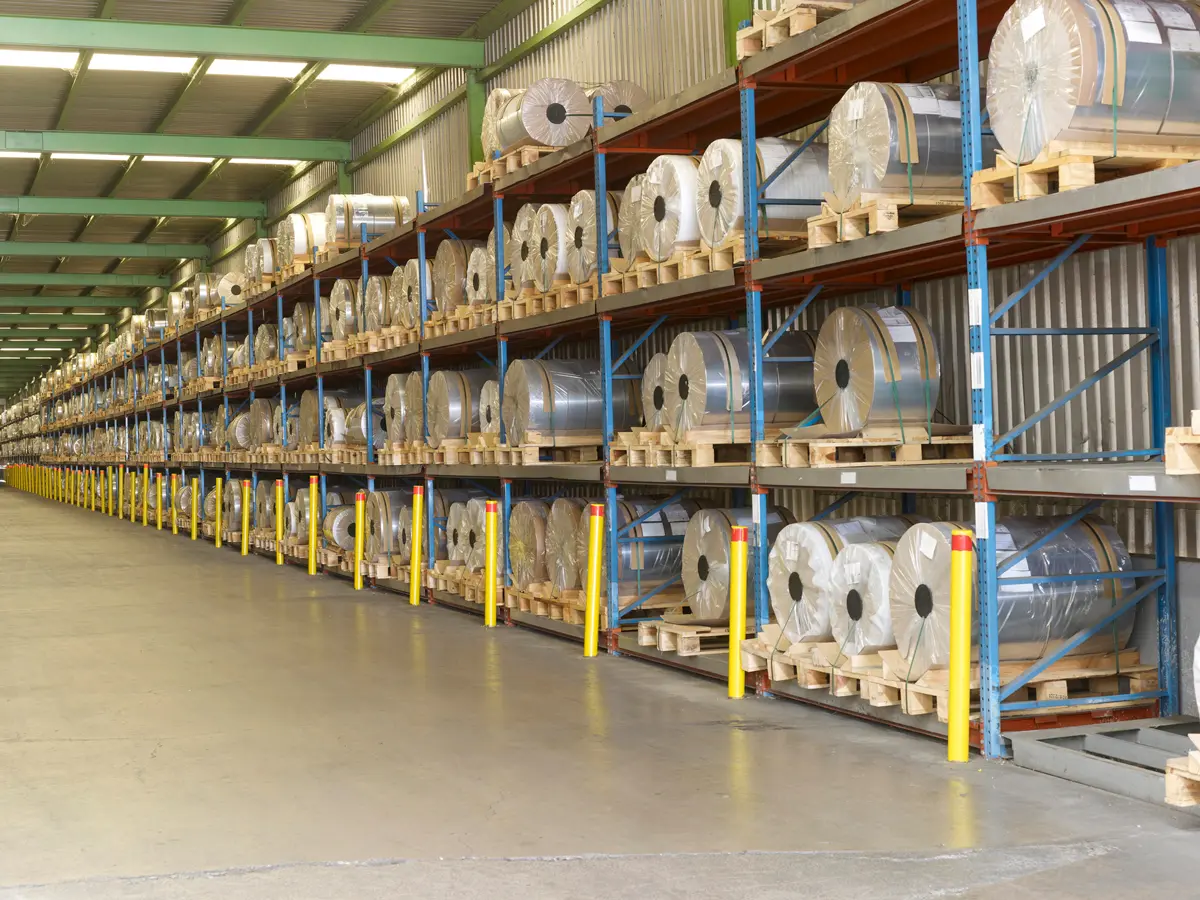What is AMIRA P754?
The AMIRA P754 Code of Practice for Metal Accounting is a set of governance guidelines released by the independent, global, not-for-profit organisation Amira. It outlines a set of 10 standardised metal accounting practices for improved corporate governance. This article discusses the evolution of mineral processing operations over the past thirty years, the increasing pressure mineral processing companies are facing to comply with emerging environmental, social, and governance (ESG) requirements, and in particular why spreadsheets are not suitable for metal accounting in today’s mineral processing plants. We also discuss other more advanced software solutions (such as MI Core®) that can help you meet metallurgical accounting, production reporting and ESG reporting requirements through the implementation of a process digital twin.Contents
- Why The AMIRA P754 Code of Practice for Metal Accounting?
- #1 – Governance compliance requirements have evolved
- #2 – Lack of consistency and transparency to source data
- #3 – Limited analytical scope
- #4 – Inaccuracy and lack of error control
- #5 – Limited re-use and scalability
- #6 – Lack of automation
- #7 – No machine learning or artificial intelligence generated insight
- #8 – Auditability
- #9 – Lack of “what if” planning
- #10 – Excel as a relational database
- The consequences of non-compliance - Katanga
- Corporate governance: A critical priority
- How Metallurgical Intelligence® offers a shortcut to AMIRA P754 compliance
Introduction
Mineral processing is not the same as it was thirty years ago.
Many internal and external factors have arisen in that time, which affect the way a mineral processing operation conducts its business.
A case in point is the increasing pressure on, and risk to operations to comply with, emerging environmental, social and governance (ESG) requirements.
Some operations have recognised the degree to which ESG non-compliance represents a high risk to their business, with the potential to adversely affect their licence to operate. However, while these firms removed Excel from their metal accounting practices, many other operations are still relying on this software tool today.
These firms have either not recognised the emerging ESG compliance risk associated with Excel, or have judged the risk to their business to be low. They can’t see any issue with their continued use of Excel in metal accounting, and so continue the same practices they have been following for thirty years. Another common scenario is where an operation has attempted a technology upgrade internally, without relying on a proven technology solution or specialist, and the initiative has failed – resulting in the plant to then resurrect its reliance on its legacy Excel solution. 1
Two to three decades ago, well before ESG had assumed the status it has today, Excel spreadsheets offered a reasonably sufficient way to track and analyse a plant’s activity. In fact, when the global not-for-profit organisation, Amira, first released its P754 Code of Practice for Metal Accounting (AMIRA P754) in October 2005, Excel was largely the only option.
Today, modern metal accounting and plant information systems (such as Metallurgical Intelligence®) have been created using the latest database and data analytics technologies – in part to address the proven ESG limitations of Excel, and to exceed the stringent principles of AMIRA P754.
However, despite the rapid value creation and risk minimisation generated by structured successful global implementations of these innovative systems, Excel remains in use.
Some clear reasons remain as to why many plants choose Excel for their metal accounting. There is typically no additional software licensing costs, as most employees already have it as part of their Microsoft Office software, and there’s usually no training required. Excel is a familiar flexible tool, and it’s easy to use.
In this article, we will explore the nature of AMIRA P754 and illustrate how Excel has been proven to be non-compliant with this code in the years since its release and adoption in mineral processing plants.
It has been widely shown that Excel can be easily manually manipulated, is almost impossible to audit, rarely integrates with management information systems, rapidly loses traceability to source data and possesses other serious governance limitations. Excel remains a valuable tool for many tasks, however not as an AMIRA P754 and mineral processing ESG compliant metal accounting solution.
Why The AMIRA P754 Code of Practice for Metal Accounting?
Amira is an independent, global, not-for-profit organisation that represents members from the resources industry. Its aim is to enhance, sustain and deliver transformational research and development, innovation and implementation to the benefit of society2.
In October 2005, Amira released the output of an extensive project to standardise metal accounting practices globally. Its goal was to raise the standard of corporate governance in the sector, which historically had ‘not generally been performed at a level required by currently acceptable corporate governance practices’3. The result was the AMIRA P754 Code of Practice for Metal Accounting, which includes 10 clear governance guidelines for best practices in metal accounting.
Today, AMIRA P754 is considered as a widely accepted global standard for metal accounting in mineral processing facilities4. In our experience, it usually forms the basis of defined business requirements for a metal accounting solution. To comply with the governance components of modern ESG requirements, mineral processing plants must showcase their adherence to the 10 governance requirements defined in the AMIRA P754 Code of Practice.
Plants that are still using Excel for their metal accounting can neither comply with these requirements nor, as shown, their ESG compliance requirements. Here are ten reasons why:
#1 – Governance compliance requirements have evolved
As earlier referenced, in 2005 when the AMIRA P754 guidelines were first released, Excel was a relatively suitable solution for the requirements of metal accounting at that time. Over the years, the scope of mineral processing plant reporting requirements has evolved considerably. As ESG requirements have evolved, plants are now expected to comply with an increasingly complex set of standards.
Prior to 2014, for instance, a business that was publicly listed on the Australian Stock Exchange (ASX) was simply required under the ASX Corporate Governance Principles and Recommendations, to “safeguard integrity in financial reporting”5.
Now, the expectation (under ASX principle 4) is to “safeguard integrity in corporate reporting”6. This change is significant on the basis that it now requires companies to report accurately based on their key assets, not just their financial performance. This means the combination of ASX and AMIRA P754 governance requirements compel compilation of complex performance data from across the plant, with historical context. Unfortunately, this is a task that has proven to be beyond Excel, despite its clear ESG non-compliance.
To ensure compliance with ASX principle #4, a plant’s production/ metal accounting reports should also be subject to an annual external audit when signing off on financial and corporate reports. This audit should be conducted by a qualified metal accounting expert, metallurgist/ engineer, also known in the industry as a “competent person”7 (not a financial chartered accountant) using a proven and accredited software specifically for minerals processing.
#2 – Lack of consistency and transparency to source data
One of the biggest risks in any organisation is that compliance reporting or data will be manually manipulated, either intentionally, or in error. It’s why AMIRA P754 principle #2 stipulates that a compliant metal accounting system “must be consistent and transparent, and the source of all input data to the system must be clear and understood by all users of the system.”8
The metal accounting data within Excel can rarely be automatically and accurately traced back to its source, such as lab assays or a plant historian. It is also unprecedented that this has been achieved over any time period as personnel changes. Simply labelling a column, running a macro and assuming the data has been transferred accurately does not make for a transparent system. Even spot checks cannot be considered a reasonable check due to the volume of data which plants hold, and the ability to manually omit or overwrite values.
Typically in this environment, the metal accounting numbers are generated and then checked by various people, each of whom may make changes to different versions of the spreadsheet based on requirements of the day, with the declared result bearing little resemblance to the source data.
In a typical mineral processing plant that uses Excel for metal accounting, there is simply no way of knowing that the data you are submitting as compliant to governance standards reflects plant source data with any degree of accuracy. In fact, when using Excel, data and formulas can be modified anonymously at any time, and without a trace. While integration with source data to Excel is possible, information can still be very easily altered without a record. This can have significant consequences, as was illustrated when Katanga Mining was investigated by the Ontario Securities Commission in 2018.9
Being able to trace the source of every identified issue is vitally important. Even a small amount of product being lost to tailings, or unnecessary overdosing of reagent on an ongoing basis can, for instance, become very costly very quickly. Equally, being able to use actual plant data to identify when a piece of plant equipment needs maintenance, rather than simply relying on scheduled maintenance, can also translate into huge cost savings.
As a result, it’s important that any metal accounting system is fully traceable and enables plant management to very quickly isolate the source of a problem, or potentially the point at which an error in a formula has been made. Excel unfortunately does not offer this capability.
#3 – Limited analytical scope
The volume of data within a typical minerals processing plant is enormous, complex, multi-faceted and ever-growing. Emerging requirements to analyse, often, billions of rows of production data from increasingly complex plant instrumentation, extends well beyond the scope of an Excel spreadsheet.
AMIRA P754 principle #7 stipulates that a compliant Metal Accounting system “must generate sufficient data to allow for data verification, the handling of metal/commodity transfers, the reconciliation of metal/commodity balances, the measurement of accuracies and error detection, which should not show any consistent bias.”10
Although Excel can certainly be configured to include calculations, it is not capable of storing enough source data to complete detailed verification. It is also incapable of generating sufficient cross-check data without any user intervention and, in fact, relies on user discretion, which is a more significant issue.
#4 – Inaccuracy and lack of error control
Another major problem with Excel as a metal accounting platform is that it lacks in-built error control.
There is no debugging capability, and no way of instantly knowing if and where an error has occurred. This is non-compliant with AMIRA P754 principle 1, requiring accuracy11.
One study suggests that 88% of spreadsheets include errors12. Another well-documented Excel failure case in financial services, known as the “London Whale”, directly resulted in losses of several billion dollars by JP Morgan, leading to suggestions of Excel being the “most dangerous software on the planet”.
A Forbes article on this subject says, “Both the Switzerland-based Basel Committee on Banking Supervision1 (BCBS) and the Financial Services Authority2 (FSA) in the UK have recently made it clear that when relying on manual processes, desktop applications or key internal data flow systems such as spreadsheets, banks and insurers should have effective controls in place that are consistently applied to manage risks around incorrect, false or even fraudulent data.“13
Similarly, in mineral processing, if the wrong figure is accidentally entered into a particular cell, or there is an unknown issue with a formula calculation, it can render the analysis or reporting completely incorrect, which can have very far-reaching consequences for the operation.
Metallurgical Systems’ Managing Director, John Vagenas, having regularly seen similar disasters in plant Excel use, has often spoken publicly about the issues associated with over-reliance on Excel spreadsheets in the minerals processing sector.
“When it comes to reporting a plant’s performance, one of the biggest problems with Excel is that it there is absolutely no way of knowing at a glance whether the data you are seeing is accurate. This poses a major problem for AMIRA P754 compliance. Using Excel is suitable when your data is simple and easily cross-referenced. This is no longer the case in a modern mineral processing facility where data is extremely complex and ever-changing,” he says.
“Only after the extent of flawed investment decisions, inaccurate compliance reporting and drastically more expensive processing costs are revealed to a plant management team, stemming from the use of Excel, does the real cost of using Excel for plant decisions and reporting become apparent,” he adds.
#5 – Limited re-use and scalability
In metallurgical facilities, reporting is ongoing and frequent. Regular and ad-hoc reports need to be quickly and constantly provided on all aspects of a plant’s operations. However, when using Excel, there’s very limited re-use of data, or ability to scale the spreadsheets based on growth or changes in the plant’s facilities. Excel doesn’t store formulas in a central location, which limits its scalability.
Compiling a new report will often involve the author cutting and pasting data from one tab on a spreadsheet to another. If formulas are accidently altered during this exercise, it can be hard to tell, and there is enormous precedent for data to be incorrectly reported. Similarly, continuous new report creation in Excel is time consuming and laborious, distracting skilled metallurgists from the main focus of their job.
In a recent article on LinkedIn, mining consultant Xavier Hill suggests that, because of this inaccuracy, it’s “time to ban” Excel for mining studies. “Excel is great because it is easy to use, you do not need to code (apart from maybe some Visual Basic) and is fantastic for simple assignments. The problem is when we use it beyond what it is really intended for. Enormous spreadsheets with complex formulas spreading over a range of tabs become next to impossible to audit and it only takes one mistake for the rest of the data and the conclusions drawn from it to be wrong,”14 he says.
#6 – Lack of automation
When a plant is using Excel spreadsheets for its metal accounting platform, it is typically reliant upon a small group of people – or even one operator – who understands the formulas within the spreadsheets and how they can be used and interpreted. The more complex the spreadsheets, the greater likelihood that they will be maintained by a single, dedicated specialist. If this particular person is away, or leaves the business, the overall metal accounting function can be seriously impacted. This directly contravenes AMIRA P754 principle #315.
In addition, the mundane and manual Excel daily operational reporting tasks often assigned to skilled plant metallurgists are typically time intensive, and prevent more value-added tasks from being performed, which are more conducive to their skillset.
#7 – No machine learning or artificial intelligence generated insight
A major disadvantage of relying on Excel for metal accounting is that, unlike advanced digital twin solutions which utilise machine learning and artificial intelligence, they cannot provide a plant’s management team with any automated insights. Nor can they drive automated improvements. The level of insight that an Excel spreadsheet can offer is very one-dimensional, and relies upon the interpretive power of those managing the spreadsheets or reviewing reports.
While an Excel spreadsheet may be a sufficient way of managing and interpreting a small pool of data, its capacity to analyse and provide insights for large datasets, and ongoing analysis, is very limited.
“As margins within our industry continue to decline, the accurate accounting of costs, revenues, resources, reserves, and capital becomes even more critical… the time has come to ban Excel for large datasets…,” says Hill16.
#8 – Auditability
AMIRA P754 principles #3 and #417 both require a clear audit trail to be available. They also require that the metal accounting system must actually be subject to internal and external audits.
We have demonstrated the inability of Excel to produce data traceable to source systems. This has the associated effect of being equally unavailable to be easily audited, resulting in non-compliance to these AMIRA P754 principles.
#9 – Lack of “what if” planning
The AMIRA P754 principles exist to drive continual improvement in the metal accounting discipline. For individual plants, this can translate to being able to predict future processing scenarios and place the plant’s management in a position to make the necessary adjustments to improve processing performance over time.
While Excel does support this “what if” planning to an extent, it doesn’t allow the operator to compare multiple scenarios at the one time. Each individual scenario will often require its own spreadsheet. This limits the extent to which plants can use data to achieve continual just and ongoing improvement.
#10 – Excel as a relational database
To obtain a robust and detailed understanding of a mineral processing plant, and comply with AMIRA P754 principle #218, plant analysts need to collect and analyse data from right across the plant, from a number of data sources, and of several data types and formats.
Bringing all of this information together, and consolidating it, is what provides plant management with true plant operational performance visibility. While Excel can integrate with some external databases and tools, its ability to capture, merge and relate huge amounts of data from various unrelated sources is very limited.
The formulas within Excel are also very non-portable and proprietary, which means it is very difficult, if not impossible, to use Excel as a data source in itself. However, many try to use Excel as a database in this manner, continuing to stretch it to lengths with which it has been shown to struggle.
The consequences of non-compliance - Katanga
As referenced earlier, in 2017, Katanga Mining released the findings of an investigation into their metal accounting19. This investigation, by the Ontario Securities Commission, found that copper cathode production for a previous year was overstated by 6,650 tonnes. This was equivalent to overstating financial performance by US$41.9 million. This announcement also led to the company’s share price dropping 56%. Prior to the investigation, reporting was performed in Excel spreadsheets. Data had little traceability or transparency, and was difficult to analyse.
As part of its settlement, in 2018 Katanga admitted that it “failed to maintain adequate internal controls over financial reporting (ICFR) and disclosure controls and procedures, and that it failed to disclose material weaknesses in its ICFR.” Both Katanga Mining and its directors personally were fined significant sums20.
Corporate governance: A critical priority
For a minerals processing plant, sound corporate governance is both an imperative of AMIRA P754 and ESG compliance. A minerals processing plant can’t have sound corporate governance if there are shortcomings in its metal accounting, which if robust, should have its numbers stem from an appropriate process plant information system.
To move forward confidently, plant management needs to ensure their systems and procedures are AMIRA P754 compliant, and adhere to all 10 principles of the Code of Practice. Be sure that the system you choose can create an audit trail, meets the governance principles of your jurisdiction, and enables you to quantify, manage and mitigate risk.
How Metallurgical Intelligence® offers a shortcut to AMIRA P754 compliance
The Metallurgical Intelligence® software suite has been specifically designed to provide mineral processing professionals a solution to exceed AMIRA P754 guidelines. The unique combination of regulatory compliance and performance improvement opportunities offered by Metallurgical Intelligence® have resulted in rapid and increasing adoption by some of the world’s leading resource companies in over 23 mineral processing plants globally.
By providing authorised personnel with centralised source of data, powered by a digital twin, Metallurgical Intelligence® gives plants the depth of insight, control, and regulatory compliance they increasingly need.
Take a look at this article written by Metallurgical Systems, and published on the AusIMM Bulletin, about the Why Excel is not compliant with AMIRA P754 Code of Practice for Metal Accounting.
If you are interested in finding out more about Metallurgical Intelligence® and how it can help your plant management evolve beyond the limitations imposed by Excel outlined in this article, please get in touch.
1 Forbes, Companies that failed at digital transformation and what we can learn from them
3 AMIRA P754 : Metal Accounting Code of Practice and Guidelines : Release 1 October 2005, p iii
4 Applying the AMIRA P754 code of practice for metal accounting, R. D. Morrison and P. G. Gaylard, January 2011
5 Corporate Governance Principles and Recommendations with 2010 Amendments (2nd edition (first published 2007), ASX Corporate Governance Council), principle 4 : “Safeguard integrity in financial reporting”.
6 Corporate Governance Principles and Recommendations (3rd edition (2014), ASX Corporate Governance Council), principle 4: “Safeguard integrity in corporate reporting”.
7 JORC, Definition of a competent person
8 AMIRA P754 : Metal Accounting Code of Practice and Guidelines : Release 1 October 2005, p 2
9 Ontario Securities Commission, Press Release
10 AMIRA P754 : Metal Accounting Code of Practice and Guidelines : Release 1 October 2005, p3
11 AMIRA P754 : Metal Accounting Code of Practice and Guidelines : Release 1 October 2005, p2
12 IDashboards, The Case against Excel
13 Forbes: Microsoft’s Excel might be the most dangerous software on the planet
14 Xavier Hill, LinkedIn: It’s time to ban Excel for mining studies
15 AMIRA P754: Metal Accounting Code of Practice and Guidelines : Release 1 October 2005, p2
16 Xavier Hill, LinkedIn: It’s time to ban Excel for mining studies
17 AMIRA P754: Metal Accounting Code of Practice and Guidelines: Release 1 October 2005, p 2
18 AMIRA P754: Metal Accounting Code of Practice and Guidelines: Release 1 October 2005, p 2
19 Ontario Securities Commission, Press Release
20 Ontario Securities Commission, Press Release
About the authors
This article has been collaboratively authored by the team at Metallurgical Systems, and fact-checked and authorised by Managing Director and industry specialist John Vagenas.





